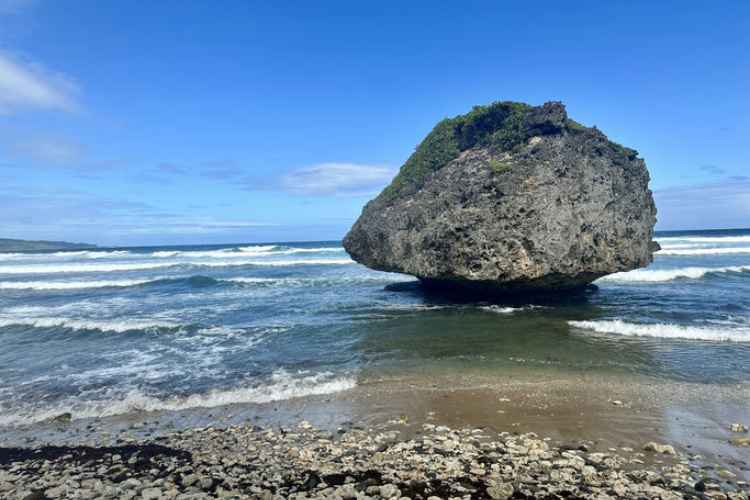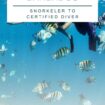
We are reader-supported and may earn a commission on purchases made through links in this article.
Diving never appealed to me. It seemed claustrophobic and gear-intensive.
But in my early fifties, I started open-water swimming. Whenever I got the chance to snorkel, I found myself diving beneath the surface to get a closer look at fish and coral. It dawned on me that I wanted to stay underwater longer, looking around in a leisurely fashion, which meant I needed a tank of air on my back.
So, for my 56th birthday, I decided to get scuba-certified. Google told me that the process involved taking an online course followed by confined dives, usually done in a swimming pool, and then a series of check-out dives in real open water. While there are many scuba-certifying bodies, I chose PADI, which is the largest and most internationally recognized.
Hood Canal is the usual place for check-out dives in the Pacific Northwest where I live. Water temperatures in this glacially carved fjord in western Washington’s Puget Sound range from 45 in winter to around 60 in summer. Fortunately, newbies can do their pool training at home, then go somewhere warm to dive for real—which sounded like a really good idea.
E-learning Diving Course
I was a bit worried about all the gear involved in diving. I’m not mechanically inclined—I’m famous in my family for stabbing cereal boxes to open them rather than following the perforations—which could be a problem with all those tanks and hoses and whatnots. Also, sharks.
After perusing local dive training options, I chose Ocean Paradise Dive and Travel. Owner and course director Larry Reinhardt has impressive credentials—he’s a certified underwater investigator, which has to be one of the world’s coolest titles—and he loans all the gear you need for training, which was a big plus since I didn’t want to invest in gear before trying out the activity.
Best Tips & Tools to Plan Your Trip
But first, the e-learning. I took my time with the course, starting in August and finishing in time for pool training in early October.
The course was divided into many short sections, combining text and helpful videos, making it convenient to do a little at a time. Some sections ended with quizzes so I could determine how much info I was retaining.
Read More: Exploring Barbados’ Quieter Side: A Journey to Eastern Barbados
Pool Training

After completing the online training and passing a test, I ventured out to a nearby aquatic complex for the two-day in-water course. Two other students trained with me.
First, we had to pass a test to prove that we could swim 100 meters (at any stroke or speed) without drowning. Then Larry introduced us to our equipment poolside. It was an intimidating mix of tanks, hoses, weights, and vests, but the equipment started to make sense between the e-learning and Larry’s patient explanations.
I don’t think I was prepared for how heavy the tank would be. Staggering around a pool deck with 40 pounds on my back prepared me to jump in the pool, whether or not I knew what I was doing.
We started out in the shallow lap pool and then progressed to a 13-foot pool used for diving—both springboard and scuba training. Larry ran us through a long checklist of skills, including underwater hand signals, descending and ascending, and clearing flooded masks. Some skills were scary, such as when he shut off our air underwater, and we had to breathe from our buddy’s alternate air supply or practice a controlled emergency swimming ascent.
By the end of the two days, I had a basic grasp of diving and had passed all my underwater skills. I was confident enough to want to see more than the blue tiles of the pool.
Why Barbados?

Barbados is the easternmost Caribbean country, but technically, it’s surrounded by the Atlantic Ocean. The south and west sides facing the Caribbean are the gentler coasts for swimming and diving. Surfers favor the rough water on the island’s eastern and northern sides, which are too intense for most swimmers.
“Barbados is one of the undisclosed secret spots,” Edwin Blackman, my scuba instructor at Hightide Watersports, told me. “It’s not advertised as a big diving destination. So divers that come here are surprised when they see the kind of fish, wrecks, and stuff we have.”
Jacqui McDermott, sales and marketing manager for Ocean Hotels, calls Barbados one of the best places in the world to learn to dive. “It’s very rare to get wrecks at such a shallow depth. You usually only see these things if you can go 40 meters. So to be able to see that in six is fabulous.”
If you didn’t do your e-learning and pool training at home, you can do your whole course in Barbados. “There’s a lot of people that sit on the beach and read their book to do their studying,” McDermott said.
Dive Training in Barbados

My dive training course met at Hightide Watersports on the western side of Barbados near the Colony Club resort. The other students were a pair of British doctors who had already done two test dives in Zanzibar on a trip for their thirtieth wedding anniversary. They would review skills and their last two test dives with me.
Blackman spent his early years as a lifeguard at Barbados’s most popular beaches. He took diving up as a hobby about 35 years ago, and his hobby soon morphed into a full-time job. “If you cut me now, blood doesn’t come out,” he said. “You get saltwater and fish.”
We started in the backyard of the dive center, where we filled out forms and took a quiz reviewing diving principles. Then Blackman fitted us with gear, and we headed to the Colony Club swimming pool to review skills like clearing our masks and orally inflating our buoyancy control device [BCD] vests while underwater. Blackman was a tough-love instructor who wanted us to figure out things ourselves, only stepping in to help if we were floundering.
After the pool, the Brits left, and Blackman and I got on a boat for my first two dives in calm Carlisle Bay. We quibbled about what I should bring on the boat, especially my phone. Blackman was unimpressed by a travel writer’s need to document events and insisted I put my phone away and concentrate on diving.
It was hard to walk across the dive boat, wearing enormous fins and a 40-pound tank on my back, but taking a giant step into unknown waters was thrilling. I was a little worried about equalizing, the process of slowly descending, pinching your nose, and gently blowing so your ears didn’t explode. But we took it slow, and that went fine.
The underwater world was gorgeous, with corals, giant clams, and iridescent blue parrotfish. But our dives were about skills, not scenery.
Read More: Scuba Diving Bucket List: 5 Top Diving Destinations
Building Diving Skills

I was a little stressed about Blackman critiquing my performance. Then, I got annoyed at myself for worrying about being perfect. I had to remember that the goal wasn’t to impress my dive instructor, just to appear minimally competent.
We did two dives that day, each lasting about 30-40 minutes. We ascended together while he breathed from my alternate air supply. He pretended to be an unresponsive diver while I dragged him along the surface, swimming on my back.
The next day, the doctors joined us for dives three and four. I was thrilled to have Blackman’s laser focus split between us, especially since one of the doctors got most of the scolding for improper snorkel use and trying to get on the ladder while another diver was still climbing onto the boat.
Dive three included skills like putting on our BCDs while in the water (not easy), doing a controlled emergency swim to the surface, and a very short stretch of underwater navigation using a compass. Dive four was the most fun because we just looked at fish instead of having to demonstrate skills. The most exciting thing we saw was the frilly-striped and polka-dotted lionfish, which is as invasive as it is beautiful.
We all passed our skills and returned to shore as certified PADI open-water divers!
Dive Fest and PADI Partnership
Kamal Springer, Barbados’ manager for sports tourism, promotes about 40 different sports in Barbados, but diving is one of the biggest ones. He works with PADI, which coordinates an annual weeklong dive fest during the summer. The festival features night diving, shipwreck diving, coral restoration, and a lionfish fry, where local chefs show off their skills cooking up this invasive species.
Part of PADI’s three-year plan with Barbados is to train young local divers. So far, Springer estimates PADI has trained 300 kids to dive. They’re aiming for a thousand. “So the partnership with them is very, very, very fruitful,” he said. “It’s very close.”
Whether you go for the camaraderie of Barbados Dive Fest or to get certified as I did, Barbados is a friendly year-round diving destination that’s easy to navigate.
If You Go:
- Check out these PADI certified dive centers.
- The Barbados Dive Fest Facebook page has info about their big event.
- During my dive training, I stayed at the friendly Rockley, just south of Bridgetown and across the street from a popular public beach.
- I also spent a few nights at ECO Lifestyle + Lodge on the quieter, more relaxing east side of the island. This small boutique hotel combines luxury with eco principles and has the most gorgeous ocean views.
Read More:
Author Bio: Teresa Bergen is a Portland-based writer who specializes in outdoors, eco, vegan and sober travel. She’s on a mission to paddle in every US state and Canadian province. Teresa is the author of Easy Portland Outdoors and Sober Travel Handbook, and co-author of Historic Cemeteries of Portland, Oregon.

